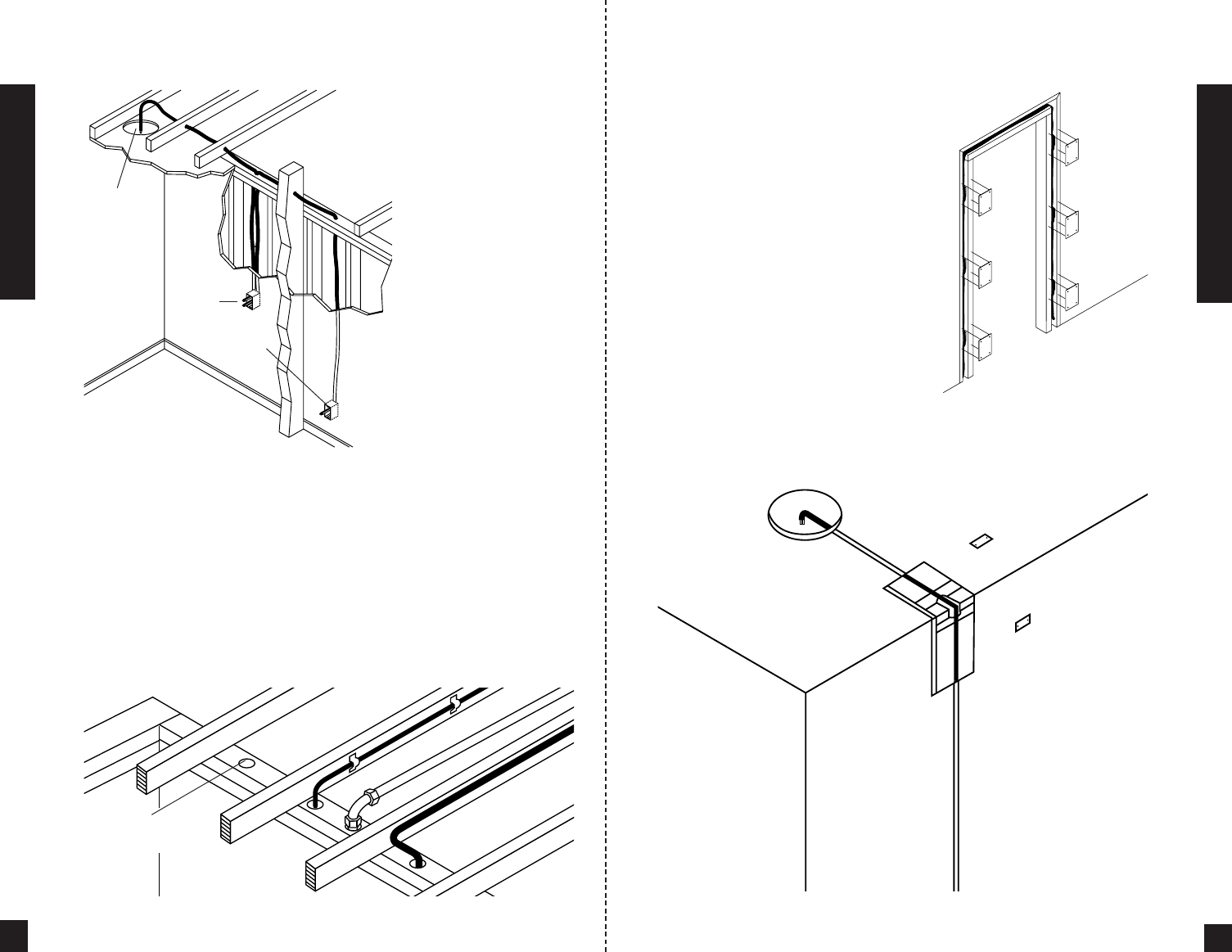
In traditional wood stud/drywall construc-
tion you should first cut the hole for the
speaker and utilize the large hole to auger
across the (through the ceiling joists) for as
far as your drill bit will take you.
Sometimes, you will need to use the
“notching” technique to reach areas your
drill bit won’t reach or to turn corners (e.g.
to go down the wall when there is not an
accessible attic). Don’t make an irregular
hole in the drywall. If you carefully cut a
rectangular hatch in the drywall you will
make your patch at the same time you cut
your hole. Notch the bottom of the joists
and run the wire through the notches.
Protect the wire with nail plates. Once
you’ve run your wire replace the hatch you
cut using standard drywall “joint tape” and
“joint compound” to hold the patch in
place, let dry, sand surface and touch-up
the wall with paint. (See Figure 9).
12
Installation Fundamentals
Figure 10
Figure 11
Diagram of ceiling speaker cut-out with ceiling joists notched for wire run.
The door jamb has been removed and the
speaker wire concealed between the wall and
the jamb. Nail plates are installed to protect
the wire and the door jamb is replaced
allel to power cables at least three feet
away. To find exactly where an electrical
cable is routed, try inspecting the inside of
the wall by turning off the breaker for a
particular power outlet or switch, remov-
ing the cover plate and switch or recepta-
cle, and shining a penlight into the wall. If
you have access to an attic or basement
space you can quickly see which part of
the wall space is free of obstructions (See
Figure 7).
When you don’t have access
above or below the wall, try
to estimate the existing wire
and pipe locations from the
positions of electrical outlets
and plumbed fixtures on both
sides of the wall. Take a look
at the outside of your house
too, sometimes conduit,
vents or drain pipe will be
visible that give useful infor-
mation. Choose the route
with the fewest potential
obstacles.
If your house is built on a
slab or you are wiring
between two finished floors,
look for baseboards which
could be removed and
replaced with the wire
behind them. Doorjambs can
be removed and often have
enough space for speaker wire all the way
around the door (See Figure 8.
Sometimes, an under-the-carpet run is
possible (there are special flat speaker
wires made for under-the-rug wire runs).
As a last resort, heating and air condition-
ing vents can be used as wire raceways for
plenum rated wire (check your local
building codes, some municipalities
require conduit).
11
Installation Fundamentals
Figure 8
Figure 9
Unobstructed space
for speaker wiring
Speaker
Location
Volume
Control
Location
Stereo
Location














